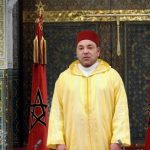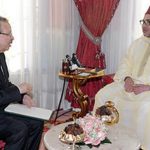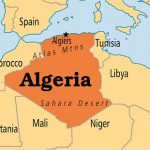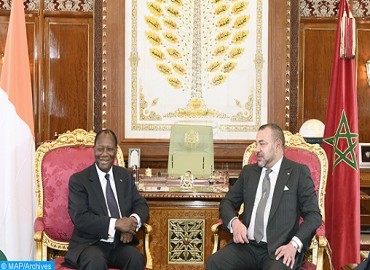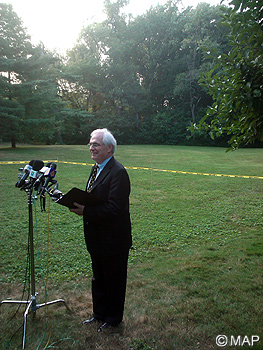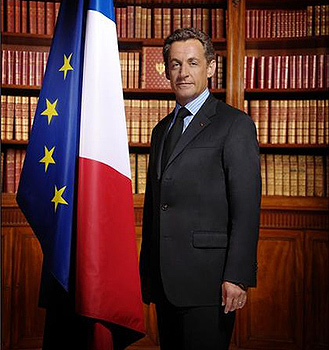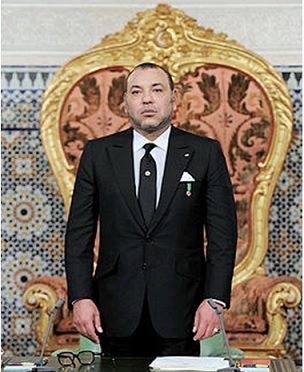HM the King, French President Inaugurate ‘Al BORAQ’ High Speed Train Linking Tangier to Casablanca
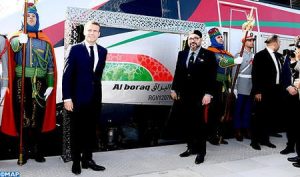 PERSISMA, Tangier – HM King Mohammed VI and President of the French Republic, H.E. Emmanuel Macron, inaugurated, Thursday in Tangier, the “Al BORAQ” High Speed Train linking the cities of Tangier and Casablanca, a new project of its kind in the Maghreb and throughout the African continent, which has mobilized investments of around 22.9 billion dirhams.
PERSISMA, Tangier – HM King Mohammed VI and President of the French Republic, H.E. Emmanuel Macron, inaugurated, Thursday in Tangier, the “Al BORAQ” High Speed Train linking the cities of Tangier and Casablanca, a new project of its kind in the Maghreb and throughout the African continent, which has mobilized investments of around 22.9 billion dirhams.
Upon their arrival at the new Tangier-City station, the two Heads of State reviewed a detachment of the Royal Guard that made the honors, and were then greeted by the minister of Equipment, Transport, Logistics and Water, the secretary of State to the minister of Equipment, Transport, Logistics and Water, the representatives of the Arab Funds, of Abu Dhabi, Kuwait and Saudi Arabia which contributed to the achievement of the project, the members of the official delegation accompanying President Emmanuel Macron, the heads of French companies that participated in the completion of this project, and the director of the national railways Office as well as its managers.
Afterwards, HM the King and the French President went to the station ticket office where two authentic tickets were given to the two Heads of State as a symbolic gesture.
The Sovereign and his illustrious guest then headed for the central platform to take their place in the “Al BORAQ” High Speed Train, which led the two Heads of State to Rabat.
As part of the efforts to revitalize and develop the national rail sector, undertaken since the accession of HM King Mohammed VI to the throne and worth around 70 billion dirhams, the “Al BORAQ” High Speed Train is the first stage of the master plan for the development of the network of lines for high-speed trains in Morocco (TGVM), a master development project planned, in the medium and long term, with the objective of responding to the evolution of mobility within the Kingdom.
The Tangier-Casablanca High Speed Line connects these two major economic centers, by providing a suitable and sustainable solution to the ever-increasing demand for mobility. Thanks to this first line, travel times are considerably reduced to 50mn instead of 3h15mn for the Tangier-Kenitra trip, 1h20mn instead of 3h45mn for Tangier- Rabat, and 2h10mn instead of 4h45mn for Tangier- Casablanca.
In addition to the remarkable gain in travel time, the Tangier-Casablanca High Speed Line brings cities closer together and speeds up mobility between the two metropolitan areas, increases the number of passengers from 3 million per year to over 6 million in the third year of operation, and improves road safety and environmental protection.
It will also contribute to freeing up capacity for freight transport induced in particular by the activity of the Tangier Med port, developing national expertise and know-how, promoting the transfer of skills and initiating the development of a local rail ecosystem that will have a regional or even continental impact.
Indeed, the experience acquired by Morocco in this area could then be perfectly shared and redeployed internationally, particularly in Africa within the framework of the South-South cooperation policy adopted by the Kingdom.
During the implementation phase, this project allowed the creation of 30 million days of direct and indirect employment, while in the exploitation phase, the Moroccan TGV is expected to generate 1,500 direct and 800 indirect jobs.
The achievement of this project has involved an intelligent Moroccan-French partnership, an appropriate transfer of know-how, ingenious engineering and advanced technical skills. This major project was designed and implemented in the most optimal way possible. It is a viable economic model based on an appropriate financial package, frugality of investment resulting from the involvement of local companies, optimized pricing, as well as rationalized operating costs.
This partnership has led to the creation in Rabat of the Institut de Formation Ferroviaire (IFF) benefiting railway workers from Morocco, France and other countries in the region, as well as the establishment of a joint venture between ONCF and the Société nationale des chemins de fer Français (SNCF) for the maintenance of high-speed trains, while allowing ONCF to gradually develop its skills in this field.
Upon their arrival at the new Rabat-Agdal railway station, the two Heads of State were greeted by civilian and military figures from the wilaya of Rabat-Salé-Kénitra.
On this occasion, director general of ONCF, Mohamed Rabie Khlie, handed over to HM the King and H.E. Emmanuel Macron two scale models of the “Al BORAQ” Train and two sets each containing a book entitled “Morocco at High Speed” in three languages (Arabic, French and English).
At the end of the inauguration ceremony, HM King Mohammed VI took leave of his illustrious guest.

